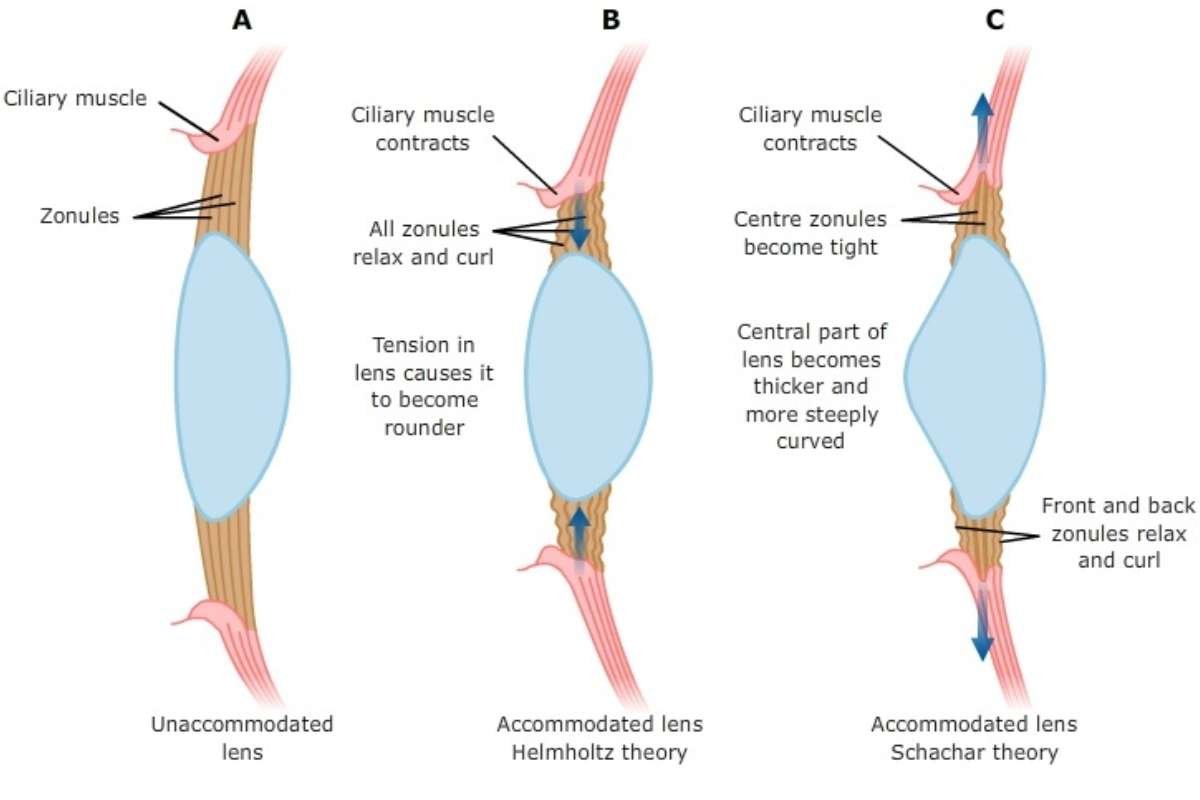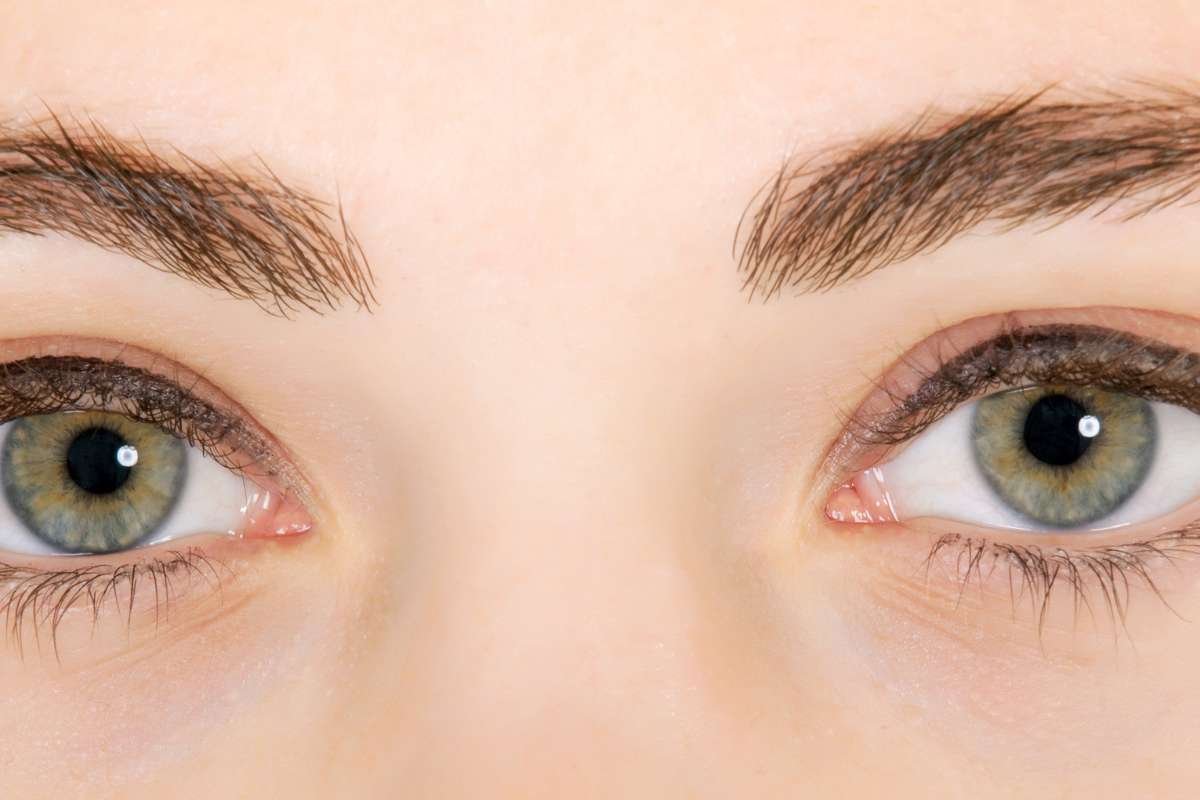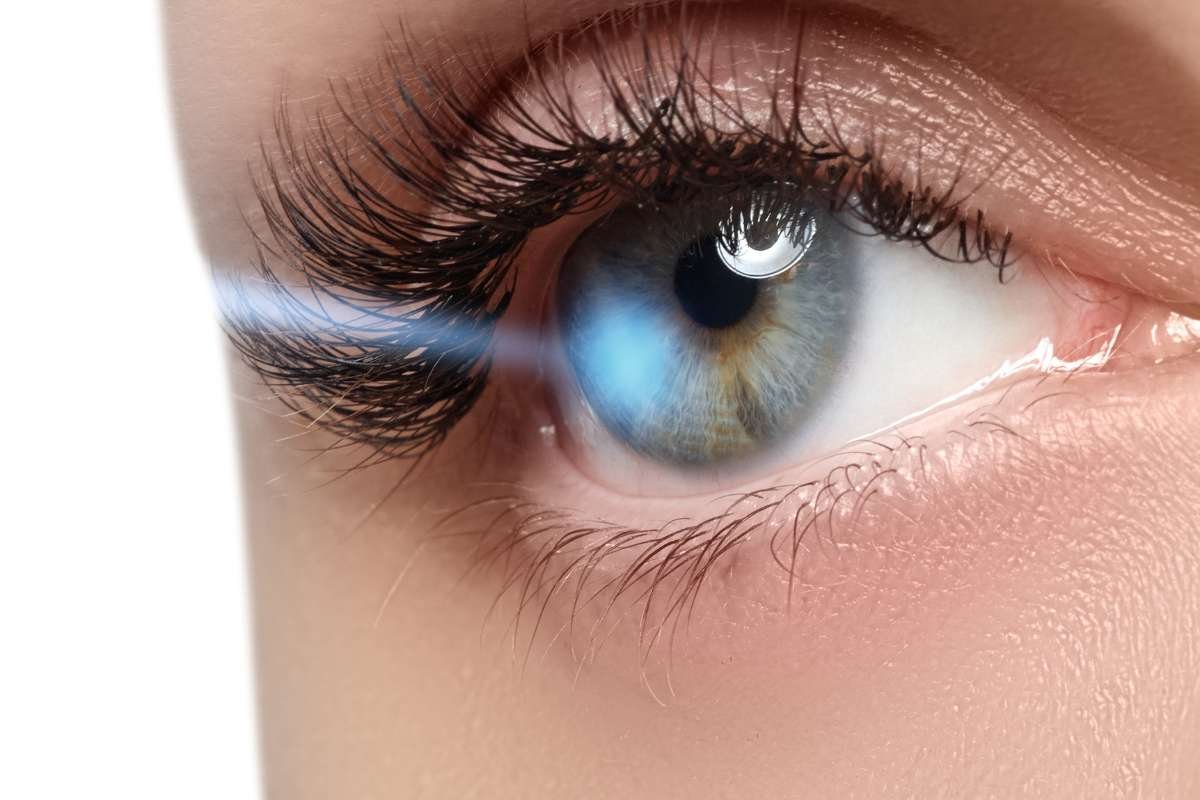The human eye is a marvel of biological engineering, capable of capturing and interpreting the world around us with incredible detail. But this clarity isn’t automatic. Our eyes possess a remarkable ability to adjust their focus, allowing us to seamlessly shift our gaze from a distant mountain range to the fine print of a book. This dynamic focusing mechanism is known as the accommodation of the eye, a complex process that ensures we see objects clearly at varying distances.
What is Accommodation of the Eye?
Accommodation of the eye refers to the eye’s ability to change its optical power to focus on objects at different distances. It’s a rapid and automatic adjustment, orchestrated by the intricate interplay of muscles and structures within the eye. Without this crucial function, our vision would be permanently fixed at a single distance, blurring everything else.
1. Structures of Accommodation
Several key structures contribute to the accommodation of the eye:
- Ciliary Muscle: This ring of muscle surrounds the lens. Its contraction and relaxation are the driving force behind accommodation.
- Zonular Fibers: These tiny ligaments connect the ciliary muscle to the lens. They transmit the tension changes from the ciliary muscle to the lens.
- Lens: This transparent, biconvex structure is the key player in accommodation. Its shape changes, becoming more or less curved, to alter the eye’s focusing power.
2. Theories of Accommodation

While the basic mechanism of accommodation is well understood, several theories have been proposed to explain the precise biomechanics involved:
- Helmholtz Theory: This is the most widely accepted theory. It proposes that contraction of the ciliary muscle reduces tension on the zonular fibers, allowing the lens to become more spherical (and thus more powerful) for near vision. Relaxation of the ciliary muscle increases tension on the zonular fibers, flattening the lens for distance vision.
- Tscherning Theory: This theory suggests that the lens shape changes are primarily due to changes in the tension of the lens capsule, rather than direct pressure from the ciliary muscle.
- Other Theories: Researchers continue to explore other potential mechanisms, including the role of the vitreous humor and the lens’s internal structure in accommodation.
3. Process of Accommodation of Eye
The process of accommodation of the eye is a beautifully coordinated sequence of events:

- Viewing a Distant Object: When looking at a distant object, the ciliary muscle relaxes, increasing tension on the zonular fibers. This pulls the lens into a flatter shape, reducing its refractive power and allowing light rays to focus on the retina for clear distance vision.
- Viewing a Near Object: When shifting focus to a near object, the ciliary muscle contracts, reducing tension on the zonular fibers. This allows the lens to assume a more spherical shape, increasing its refractive power and bending light rays more strongly to focus on the retina for clear near vision.
- Neural Control: This entire process is controlled by the autonomic nervous system. Signals from the brain, triggered by the perceived distance of an object, direct the ciliary muscle to contract or relax appropriately.
Why Does the Eye Need to Accommodate?
The need for accommodation of the eye arises from the optics of the eye itself. The eye’s optical system, like that of a camera, needs to adjust its focal length to create sharp images at different distances. Without accommodation, the eye would be focused only at one specific distance. Objects closer or farther away would appear blurry. This adaptability is essential for navigating our environment, interacting with objects at arm’s length, and enjoying the full spectrum of visual experiences.
1. Types of Accommodative Dysfunctions

Problems with accommodation, known as accommodative dysfunctions, can significantly impact vision and comfort. Some common types include:
- Accommodative Infacility: This is the most common accommodative dysfunction, characterized by difficulty focusing on near objects. The ciliary muscle may not contract effectively, preventing the lens from assuming the proper shape for near vision.
- Accommodative Insufficiency: In this condition, the amplitude of accommodation is reduced, meaning the eye cannot focus as closely as it should.
- Accommodative Spasm: This involves involuntary contractions of the ciliary muscle, leading to difficulty relaxing focus for distance vision.
- Accommodative Inertia: This refers to a sluggish response of the accommodative system, resulting in blurred vision when switching focus between near and far objects.
2. Symptoms of Accommodative Infacility
Accommodative infacility can manifest in a variety of symptoms, including:
- Blurred vision at near
- Eye strain or fatigue
- Headaches, especially after prolonged near work
- Difficulty concentrating
- Avoidance of near tasks
- Intermittent double vision
- Slow focusing when shifting gaze from distance to near
3. Treatment for Accommodative Infacility
Treatment for accommodative infacility typically involves:
- Vision Therapy: This involves a series of exercises designed to improve the strength and flexibility of the ciliary muscle and enhance the coordination between the eyes and brain.
- Lenses: In some cases, lenses may be prescribed to aid near vision and reduce the burden on the accommodative system. These may be single-vision reading glasses or bifocals.
- Medications: In rare instances, medications may be used to relax the ciliary muscle in cases of spasm.
Conclusion
Understanding the intricacies of the accommodation of the eye is crucial for both eye care professionals and individuals seeking to maintain healthy vision. If you experience any symptoms of accommodative dysfunction, it’s important to consult an eye doctor for a comprehensive evaluation and appropriate treatment. Early detection and intervention can help prevent further complications and ensure clear, comfortable vision for years to come.







